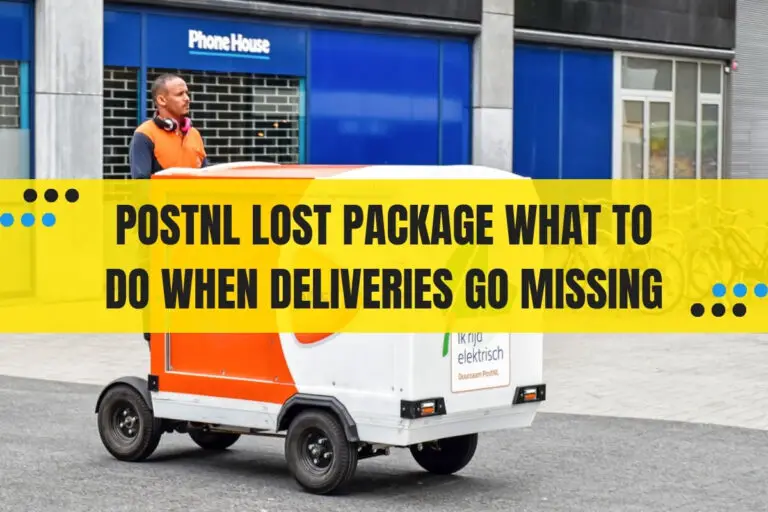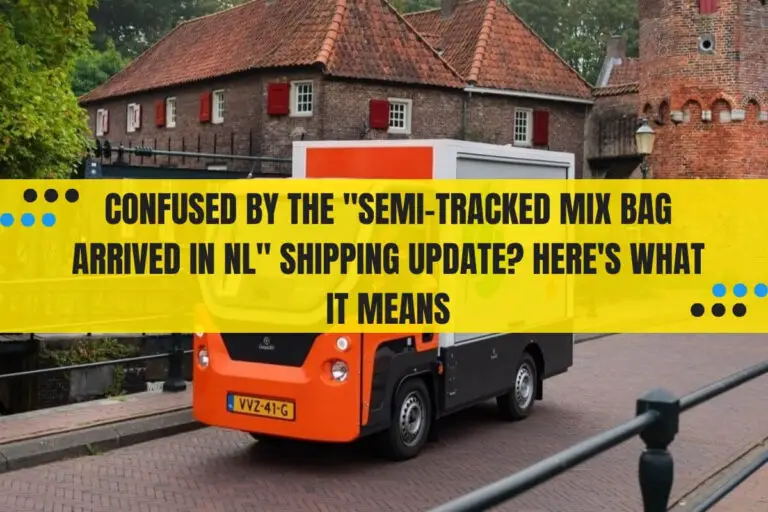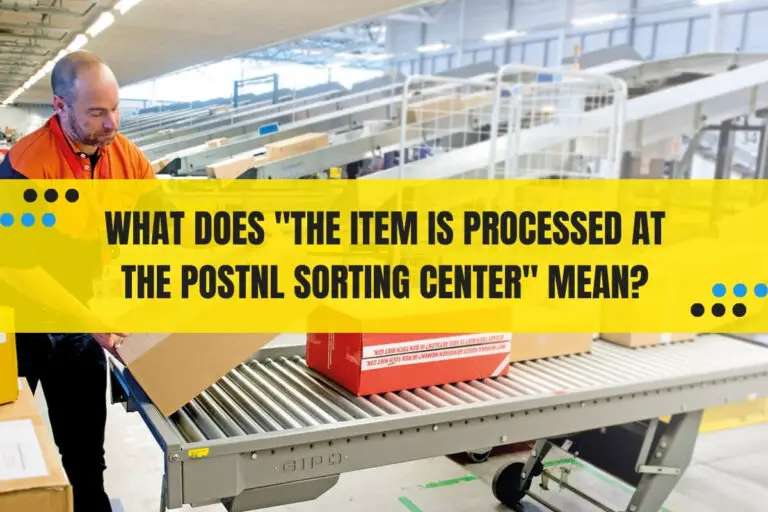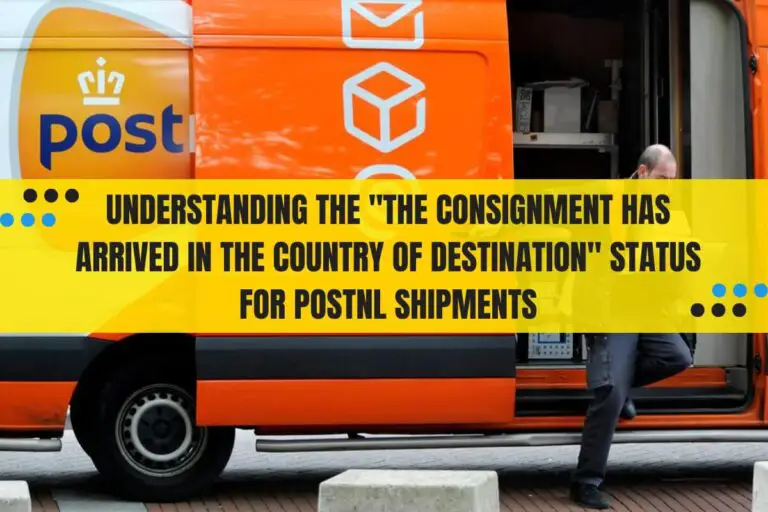What Does “Pre Declaration of the Item has Been Received by Customs” Mean for Your PostNL Shipment?
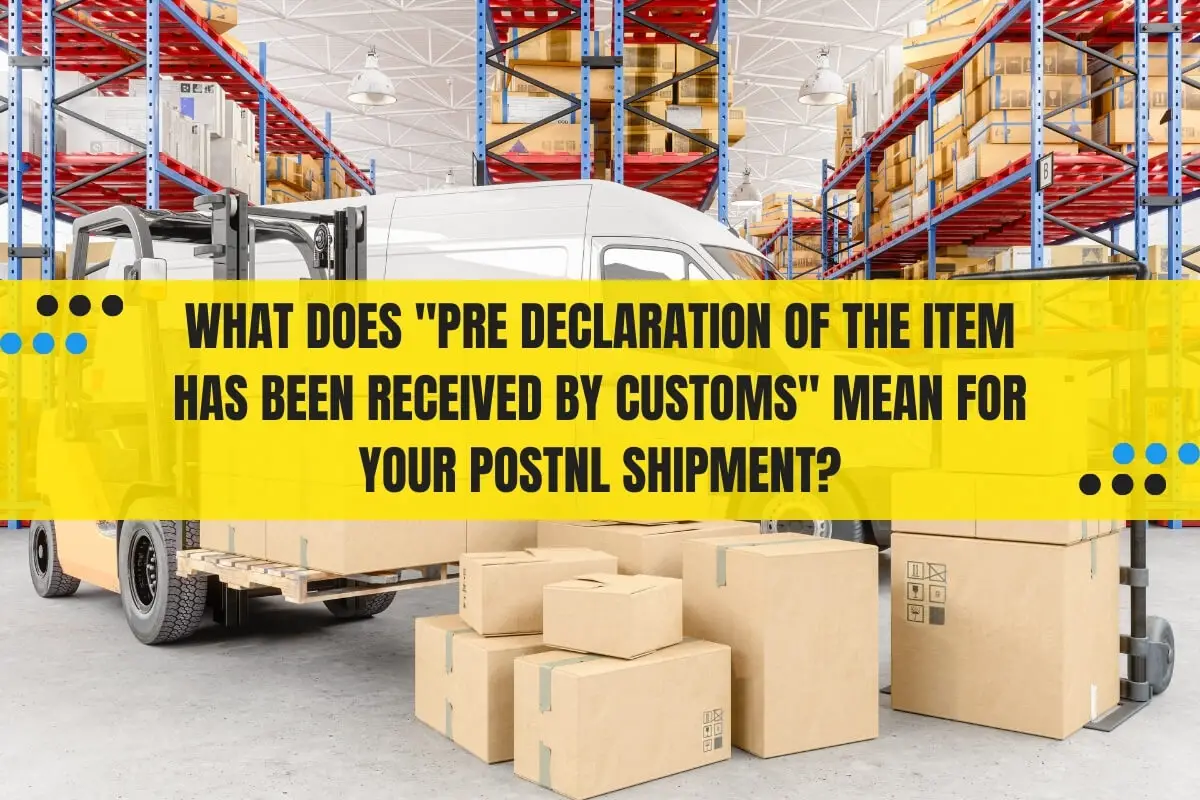
If your PostNL package shows the status ‘Pre Declaration of the Item has Been Received by Customs,’ it means customs has flagged your shipment for inspection. This guide explains what happens next, potential delays, and any fees you may need to pay.
When it comes to international shipping, customs plays a crucial role in inspecting packages entering a country to ensure compliance with import regulations. The “Pre Declaration of the Item has Been Received by Customs” status indicates that your shipment’s details have been provided to customs authorities in advance, alerting them of an incoming consignment.
Understanding the “Pre Declaration” Status
Pre-declaration is a common practice used by shipping carriers and e-commerce platforms to notify customs about future goods imports. This allows the necessary paperwork and item information to be reviewed before the physical package arrives at the border.
The shipper (PostNL) has submitted details like the contents, value, weight, and destination of your shipment to customs officials in the origin country. This notification is done for large bulk consignments containing multiple orders.
The Customs Clearance Process
After receiving the pre-declaration, customs authorities begin processing your package for clearance. Here’s a general overview of what happens during this stage:
- Detailed Assessment: Customs thoroughly reviews the submitted shipment details to ensure completeness and accuracy.
- Examination: Your package may be physically inspected to verify the contents match the declaration. This can involve opening the parcel or using screening equipment like X-rays.
- Duty Calculation: If your shipment’s value exceeds the duty-free threshold, customs will determine any applicable duties, taxes, or fees based on the destination country’s import regulations.
- Clearance Decision: Finally, customs decides whether to release your package for final delivery or if any issues prevent clearance (like prohibited items or inaccurate documentation).
Most legitimate shipments clear customs within a few days. The process can take longer due to discrepancies, random inspections, or high volumes at the border.
Why Your PostNL Package Triggered a Pre-Declaration
There are several common reasons why your PostNL shipment may have been flagged for customs pre-declaration:
- High Value: Shipments above a certain value threshold (often $20-$800 depending on the destination) require formal customs entry and duty payment.
- Restricted Items: Goods like electronics, tobacco, alcohol, or anything regulated may get flagged for verification they comply with import rules.
- Random Checks: Many countries do routine random inspections on a percentage of incoming international parcels for security and compliance.
- Inaccurate Documentation: If the shipment details provided seem incomplete or don’t match the package contents, it increases the likelihood of inspection.
By submitting pre-declaration data, customs can identify higher-risk or regulated shipments ahead of time and triage which ones require closer examination upon arrival.
Transit Updates After Pre-Declaration
After the “Pre-Declaration Received” status, you may see additional updates from PostNL like:
- “Item handed over in bulk”
- “Consignment received at PostNL facility”
- “Item cleared by customs”
These indicate your package has been processed through initial customs channels and is proceeding through the normal international transit process towards its final destination.
Potential Causes of Delays at This Stage
Packages may get temporarily delayed during the pre-declaration process. Potential reasons include:
High Mail Volumes: During peak periods like holidays, the sheer number of incoming parcels can overload customs processing capabilities, leading to backlogs.
Staging Consignments: Your shipment may get “bumped” between different outbound bulk consignments multiple times before finally being dispatched, adding delays.
Seller Processing Times: There could be a lag on the seller’s end in preparing and providing your order details to PostNL for pre-declaration initially.
Tracking stuck on pre-declaration status for several weeks signals a logistical delay, not customs examination of your specific package.
How Long Until My Package Clears Customs?
The million-dollar question – how long can you expect customs clearance to take? Unfortunately, there’s no definitive answer, as processing times can vary significantly based on several factors:
- Country of Destination: Customs procedures, staffing levels, and strictness of inspections differ for every country your package enters.
- Type of Goods: Highly regulated items like electronics often face more stringent checks that take longer to clear.
- Shipment Volume: During peak import periods like holidays, the sheer parcel volumes lead to customs bottlenecks and delays.
- Incorrect Documentation: If shipment details are missing or inaccurate, it will almost certainly prolong the clearance process.
As a general guideline, most international shipments clear customs within 1-5 business days if everything is properly documented. However, it’s not uncommon for the process to take 1-3 weeks during busier periods.
Tracking Your Shipment’s Progress
Check PostNL tracking page or third-party sites like 17Track or ParcelApp frequently. These sites may provide additional tracking visibility when PostNL system delays updates.
Do I Need to Pay Customs Fees?
One major concern when customs gets involved is the potential for duties, taxes, or other fees being charged on your shipment. Whether you’ll owe any customs charges depends on factors like:
- Shipment Value: Most countries have a duty-free allowance or “de minimis” value under which no duties apply, often around $20-$800.
- Item Type: Higher duty rates are charged on certain products like electronics, tobacco, alcohol, and luxury goods. Books, clothing and low-value items are typically exempt.
- Country of Import: Import tax and duty rates, processes, and allowances differ for every destination country.
- Shipping Terms: If the seller uses terms like Delivery Duty Paid (DDP) where they arrange customs fees upfront, you ideally won’t face charges at delivery.
Shipment flagged for customs fees requires paying fees to local postal carrier upon delivery before receiving package. Disputing unexpected fees is possible but difficult.
Shipping Terms and Liability for Fees
The shipping terms used by the seller or PostNL can impact who is responsible for paying any customs duties and import taxes. Key terms include:
- Delivery Duty Paid (DDP): Seller covers all duties/taxes upfront, recipient pays no fees
- Delivery Duty Unpaid (DDU): Recipient is responsible for any destinating duties/taxes
- Free On Board (FOB): Recipient handles export clearance, taxes and duties in destination country
DDP terms minimize customs fee headaches but rarely used for low-value e-commerce orders due to cost for sellers. Review terms carefully when ordering higher-value items internationally.
Addressing Prolonged Customs Delays
Despite customs being a routine part of international shipping, sometimes parcels can get significantly delayed or seemingly stuck indefinitely during the clearance process. If it’s been over 4 weeks since the pre-declaration status, here are some steps you can take:
Contact PostNL Customer Service: Reach out and request a status update. PostNL should be able to check with customs directly and escalate the case if needed.
Contact the Seller: Let the merchant know about the delay and ask if they can assist or provide any missing documentation to help facilitate customs release.
Wait It Out Further: Unfortunately, complex customs cases can sometimes take 6-8 weeks or longer to fully resolve. A bit more patience may be required.
Request a Refund/Return: As a last resort after an extensive delay (60+ days typically), you can ask the seller for a refund or request PostNL return the shipment if it hasn’t cleared customs.
Most shipments eventually clear customs processing, even if delayed. Persistent follow-up is key.
Preventing Future Customs Snags
Once you (finally) receive your long-awaited PostNL delivery, you may want to take steps to avoid repeating the customs chaos next time:
Research Destination Limits: Look up duty-free allowances and prohibited/restricted items for the countries you order from frequently.
Split Large Orders: Break up big orders into smaller packages below the duty thresholds to avoid formal customs entry.
Use Faster Shipping: While more expensive, expedited shipping methods receive prioritized customs processing over slower economic options that can get deprioritized.
Proper Documentation: Ensure you provide complete and accurate details like product descriptions, quantities, and valuations when ordering to minimize documentation issues.
Ship Regionally: If possible, order from sellers/warehouses located closer to your destination country to reduce complex cross-border customs procedures.
Consider Shipping Forwarders: Services like Planet Express can help navigate customs requirements and fees more efficiently.
Purchase Shipping Insurance: This provides protection and assistance if your package gets truly lost or hopelessly stuck in customs limbo.
International shipments may face customs delays or fees. Being an informed buyer can reduce these risks. Proactive planning helps.
Key Takeaways
Seeing “Pre Declaration of the Item has Been Received by Customs” on your PostNL tracking doesn’t mean anything is wrong – it’s simply part of the standard customs process for international shipments. Here are the key points to understand:
💡 Pre-declaration allows customs to triage shipments for inspections ahead of physical arrival
⌛ Customs clearance can take 1-5 days normally but may be delayed by weeks during peak periods
💰 You may need to pay duties/taxes upon delivery if value exceeds allowances for the destination
📦 Contact PostNL and the seller if your shipment seems excessively stuck in the customs process
🚏 Using faster shipping methods helps parcels clear customs more efficiently
🔍 Research import rules and order sizes to avoid customs snags in the future
With some patience and proactive planning, that pesky “Pre Declaration” status should resolve, and your PostNL delivery will eventually arrive safely! Understanding the customs processes makes the wait easier.

